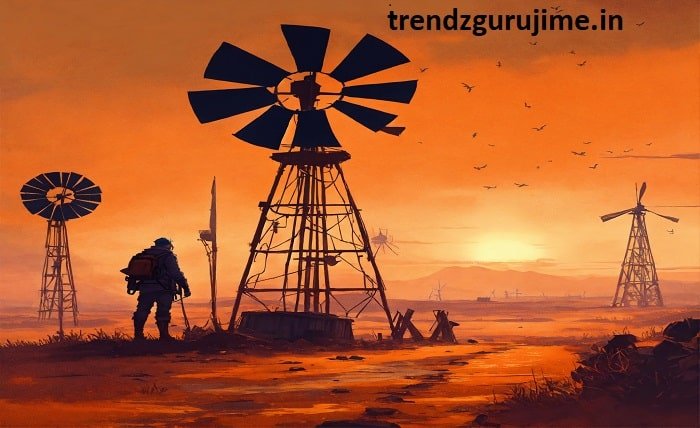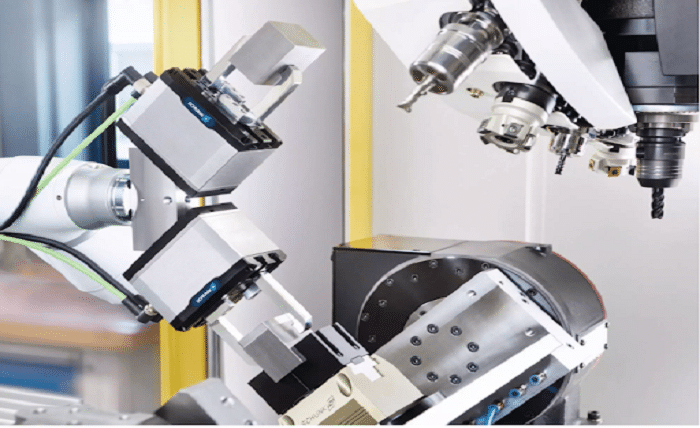In literature and political analysis, symbols often carry deep meanings that extend beyond their surface representations. The windmill in George Orwell’s “Animal Farm” serves as a multifaceted symbol reflecting Marxism, technology, revolution, and capitalism. Through its representation, Orwell critiques the failures of revolutionary ideals and the exploitation inherent in capitalist systems. This blog post explores the various layers of symbolism associated with the windmill and how it encapsulates critical themes of Marxism, technological progress, revolutionary struggle, and capitalist dynamics.
The Windmill as a Symbol of Marxism
In the context of Marxism, the windmill in “Animal Farm” symbolizes the aspirations of a socialist utopia. Marxism advocates for the overthrow of capitalist systems and the establishment of a classless society. The windmill, proposed by Snowball, represents the promise of a better future for the animals, where technological advancements would lead to greater equality and prosperity. However, as the story progresses, the windmill’s failure to bring about the promised utopia exposes the shortcomings and betrayals of Marxist ideals as interpreted by the pigs.
The Windmill and Technological Revolution
From a technological perspective, the windmill represents the advancement and progress that technology can bring. In “Animal Farm,” Snowball’s idea to build the windmill is driven by the belief that technological innovation will improve the animals’ quality of life. The windmill is envisioned as a means to generate power and ease labor, mirroring the real-world technological revolutions that promised to elevate societies. However, the eventual destruction and misuse of the windmill illustrate the disparity between the promise of technological progress and its actual outcomes in a flawed system.
The Windmill as a Revolutionary Symbol
The windmill also serves as a symbol of revolution and its subsequent corruption. In the story, the construction of the windmill represents the revolutionary zeal of the animals as they seek to overthrow their human oppressors. It embodies their collective efforts to create a new order. However, as the pigs consolidate power and betray the revolutionary ideals, the windmill becomes a tool for their own gain rather than a means of achieving the original revolutionary goals. This transformation reflects the broader theme of revolutionary movements often succumbing to corruption and authoritarianism.
Capitalism and the Exploitation of the Windmill
In the broader context of capitalism, the windmill symbolizes the exploitation and manipulation inherent in capitalist systems. The pigs, who initially championed the windmill as a symbol of progress, later use it to consolidate their power and exploit the other animals. The windmill’s construction and maintenance come at the expense of the animals’ labor and well-being, reflecting how capitalist systems can lead to the exploitation of workers for the benefit of a privileged few. The windmill, therefore, becomes a symbol of capitalist exploitation disguised as progress.
The Failure of the Windmill and Marxist Critique
The failure of the windmill in “Animal Farm” serves as a critique of Marxist theory and its practical implementation. Despite the initial promise of the windmill to bring about a better future, its ultimate collapse signifies the failure of the pigs’ version of Marxism. The windmill’s failure exposes the gap between theoretical ideals and practical realities, highlighting how revolutionary ideals can be distorted and lead to disappointment when leaders prioritize their power over the welfare of the collective.
The Windmill and the Betrayal of Revolutionary Ideas
The windmill’s construction and subsequent use reflect the betrayal of revolutionary ideals. What was once a symbol of hope and progress becomes a mechanism for reinforcing the pigs’ control over the farm. This betrayal is emblematic of how revolutionary leaders can become corrupted by the very power they sought to overthrow. The windmill’s transformation from a symbol of collective struggle to an instrument of authoritarian rule illustrates the often disappointing outcomes of revolutionary movements.
Symbolism of the Windmill in Contemporary Contexts
The symbolism of the windmill extends beyond the confines of “Animal Farm” and offers insights into contemporary issues. In modern contexts, the windmill can be seen as a metaphor for technological advancements and revolutionary movements that promise change but often fall short. It represents the gap between idealistic goals and the practical challenges of achieving them. The windmill’s story serves as a cautionary tale about the potential for technological and revolutionary processes to be co-opted by those in power.
The Windmill as a Reflection of Human Nature
The windmill’s fate also reflects broader themes of human nature and societal dynamics. Its rise and fall illustrate how power, ambition, and corruption can undermine even the most well-intentioned projects. The windmill symbolizes the inherent flaws in human endeavors and the tendency for ideals to be compromised when faced with real-world complexities. It serves as a reminder of the challenges inherent in achieving and maintaining genuine progress and equality.
Lessons from the Windmill’s Symbolism
The symbolism of the windmill offers valuable lessons about the nature of political movements, technological progress, and human aspirations. It underscores the importance of vigilance in safeguarding against corruption and exploitation, whether in revolutionary contexts or technological advancements. The windmill’s story encourages critical reflection on the promises and realities of political and technological change, emphasizing the need for integrity and accountability in pursuing societal goals.
Conclusion
The windmill in “Animal Farm” is a potent symbol that encapsulates key themes of Marxism, technological revolution, and capitalism. Through its representation, Orwell critiques the failures and contradictions inherent in revolutionary and capitalist systems. The windmill’s rise and fall reflect the challenges of achieving and maintaining progress, the dangers of corruption, and the exploitation that can occur under both revolutionary and capitalist frameworks. By understanding the symbolic significance of the windmill, readers gain deeper insights into the complexities of political and technological systems and the human nature that drives them.
FAQ
1. What does the windmill symbolize in “Animal Farm”?
- The windmill symbolizes the aspirations of Marxism, the promise of technological advancement, the corruption of revolutionary ideals, and the exploitation inherent in capitalist systems.
2. How does the windmill reflect Marxist ideals?
- The windmill reflects Marxist ideals by representing the goal of a utopian society where technological progress leads to greater equality and prosperity. However, its failure exposes the shortcomings of Marxist implementation.
3. What role does technology play in the symbolism of the windmill?
- Technology in the windmill’s symbolism represents the promise of progress and improvement. The windmill is intended to ease labor and enhance productivity, reflecting the potential of technological advancements.





